For those who need to know what and where each star, planet and moon is. Accurate as of 0.9.8 beta
Introduction
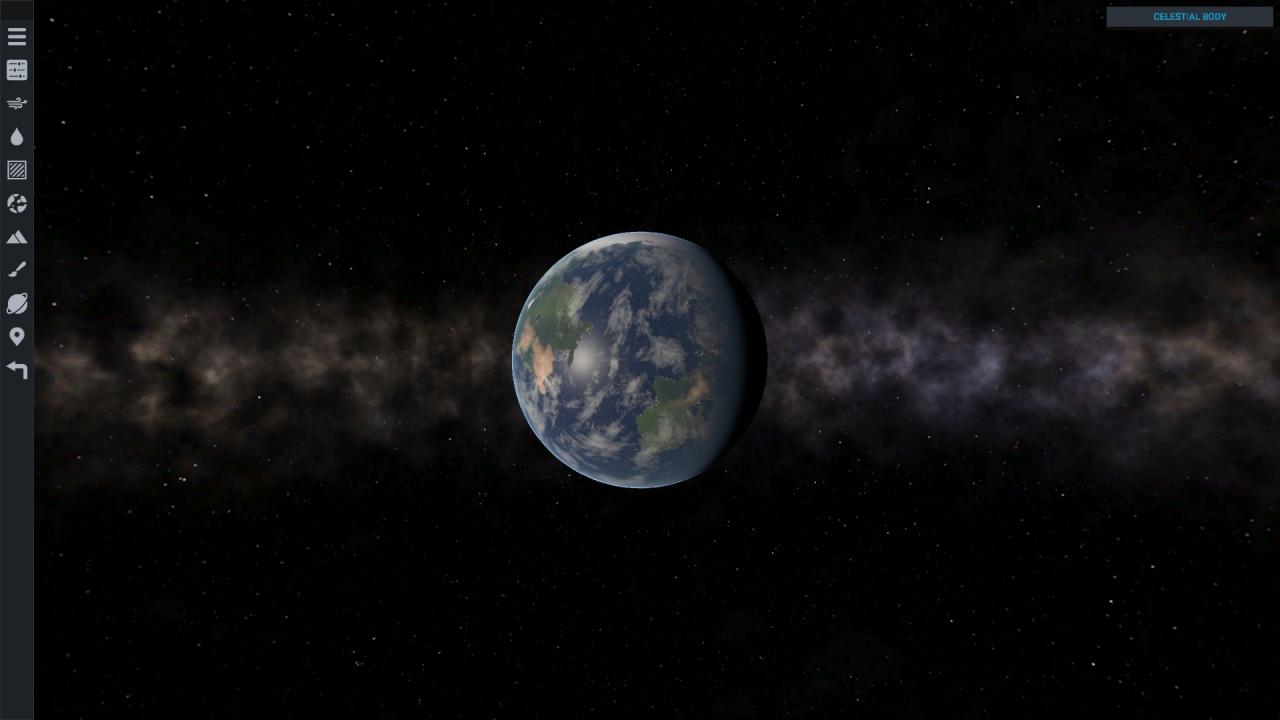 Droo as seen in PlanetStudio.
Droo as seen in PlanetStudio.
Juno
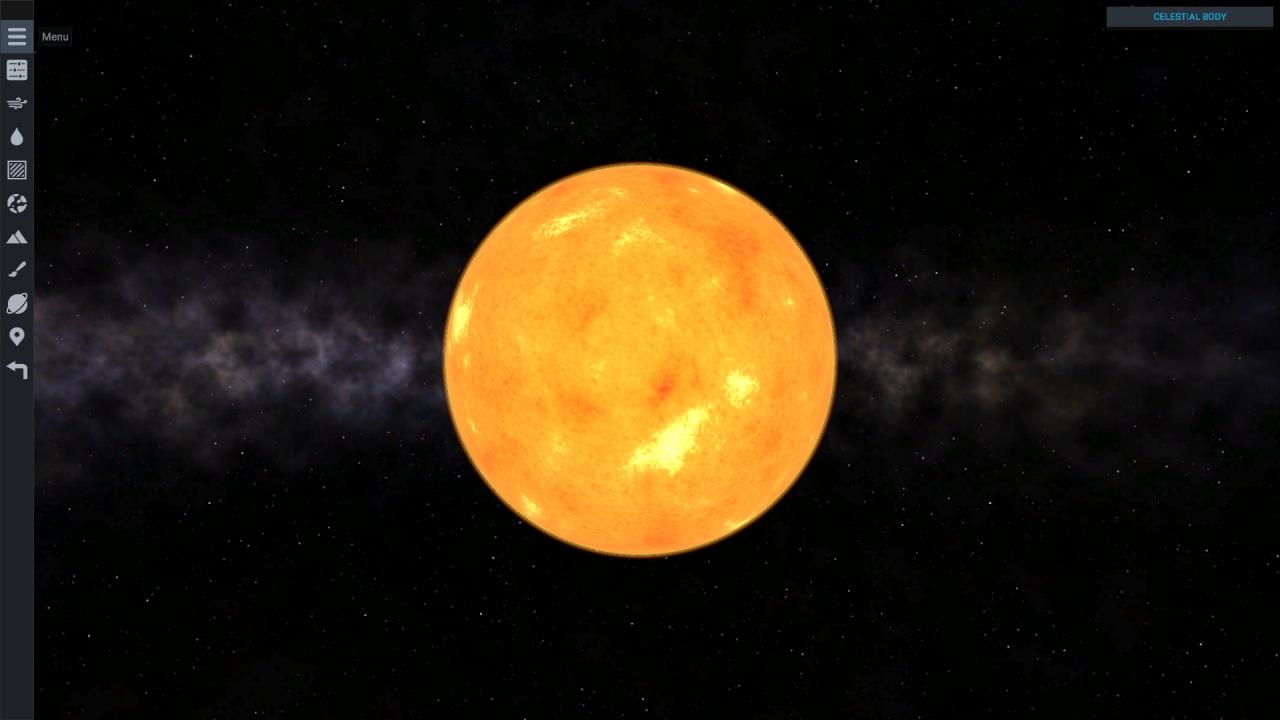 Juno as seen in PlanetStudio.
Juno as seen in PlanetStudio.
Juno is the only star in the stock game, and it is the analog for the Sun.
Landing on Juno is impossible; your ship will be destroyed at an altitude of 5,000 km (assuming that it hasn’t already been by the intense heat!)
Vulco
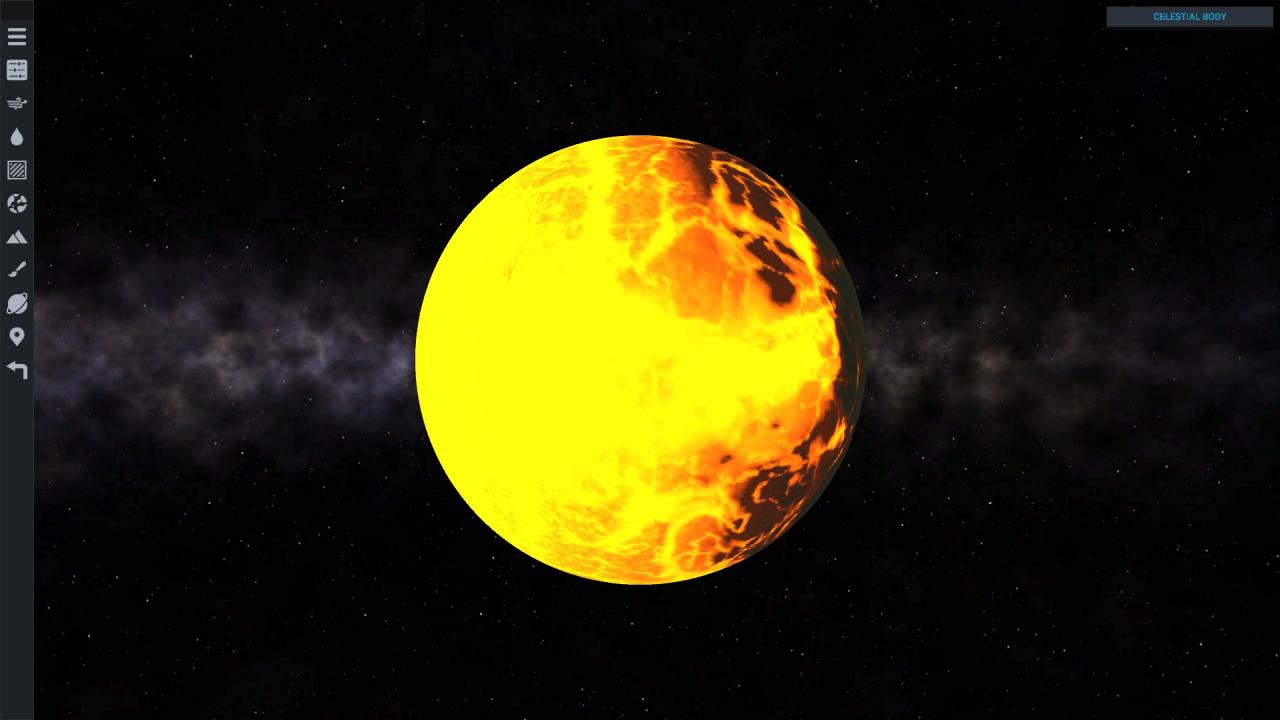 Vulco as seen in PlanetStudio.
Vulco as seen in PlanetStudio.
Vulco is the first planet from Juno, and is (supposedly) the analog to Mercury.
Unlike Mercury however, Vulco is tidally locked to Juno; therefore, one side always faces its star, and the other is in perpetual darkness. Also, its gravity is much stronger than Mercury’s, being 7 m/s. (This is likely unintentional, unknown if it will be fixed in the future) Vulco has no moons.
One half of its surface is covered in molten lava (which is actually harmless), and the other in some lava rivers and very rough, mountainous terrain.
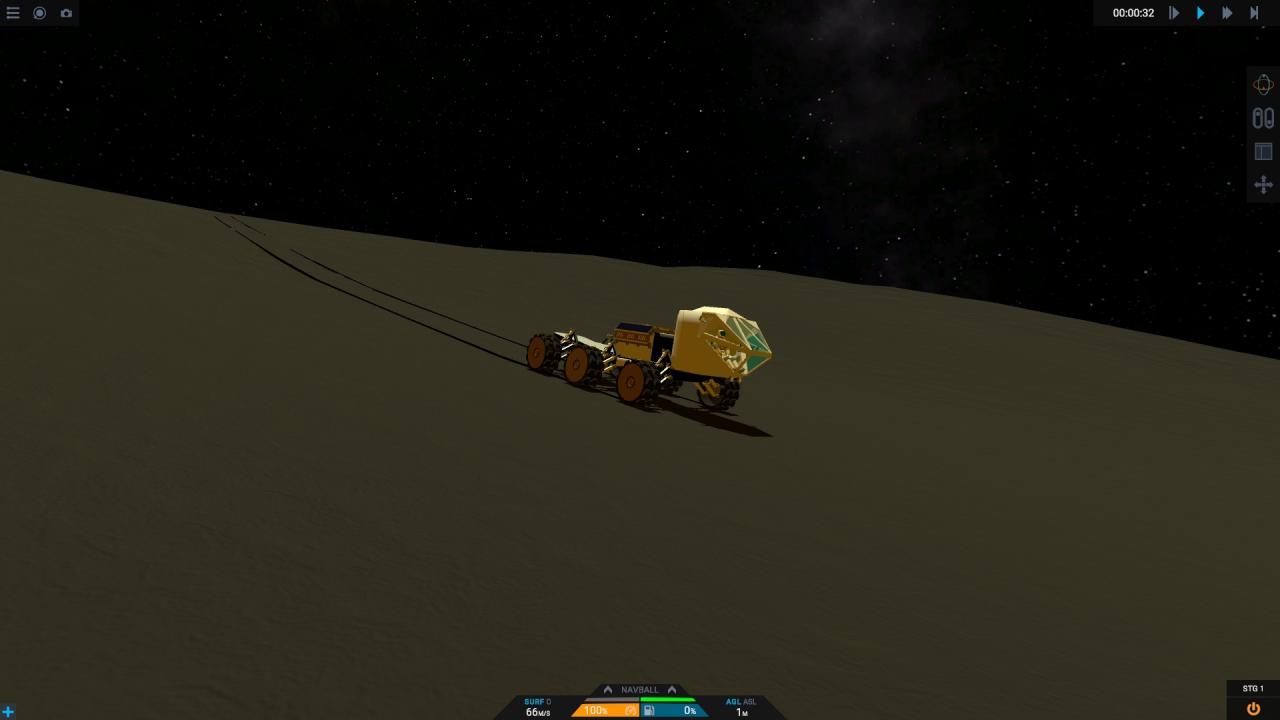 The stock craft SimpleRover driving on Vulco.
The stock craft SimpleRover driving on Vulco.
Sergeaa
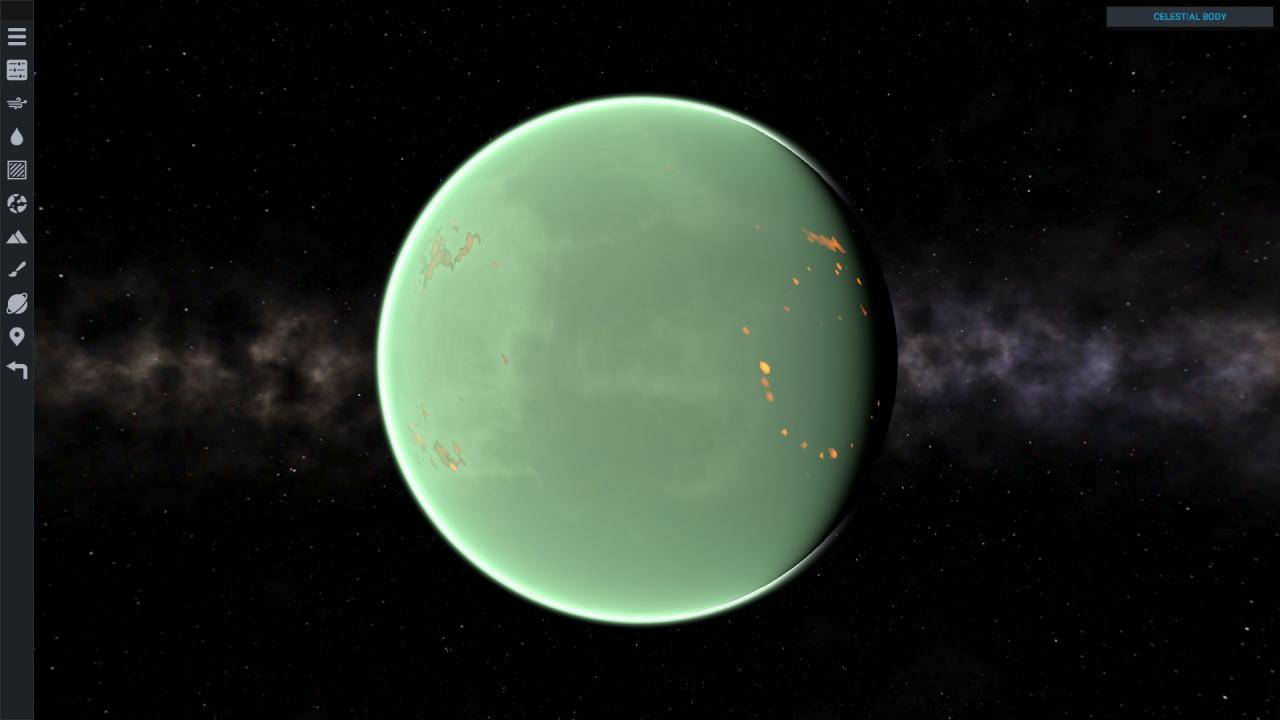
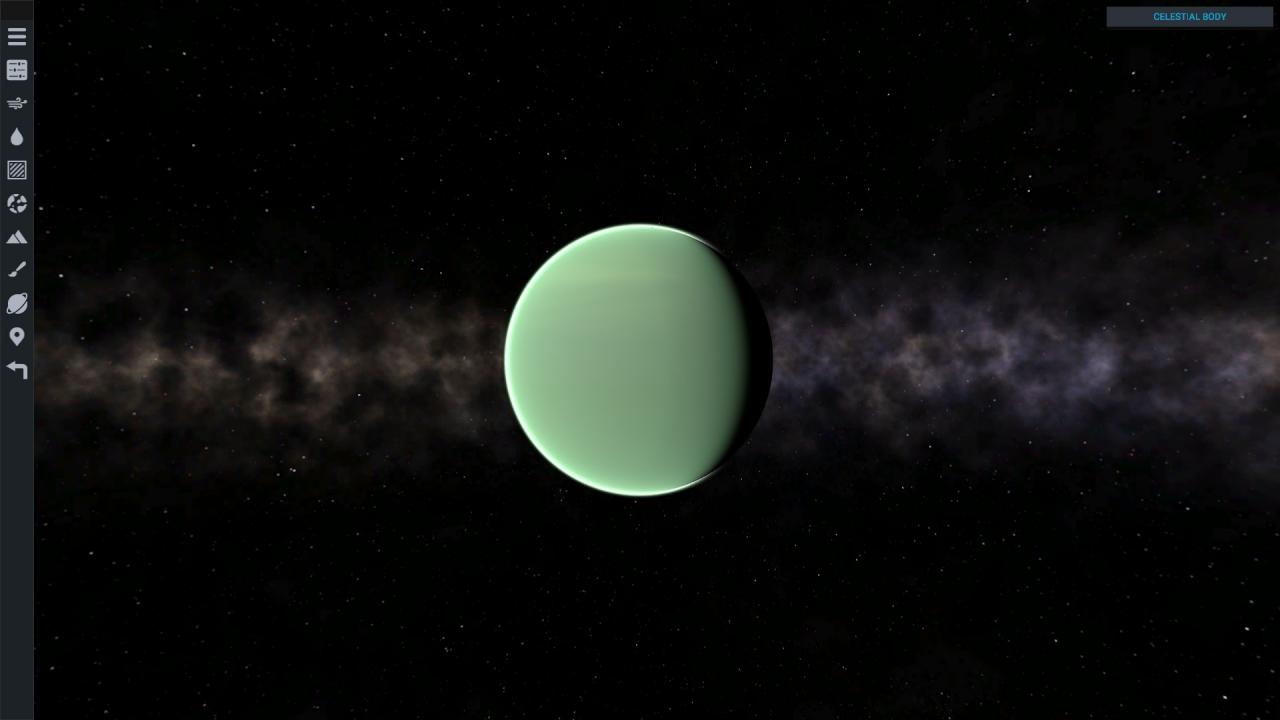 Top: Sergeaa as seen closeup in PlanetStudio.
Top: Sergeaa as seen closeup in PlanetStudio.Bottom: Sergeaa as seen from afar in PlanetStudio.
Sergeaa is the second planet from Juno, and the Venus analog for SR2. Landing and returning from Sergeaa is easier said than done; its atmosphere is extremely thick, and most engines will be very weak or not work at all. That being said, Sergeaa is an excellent place to fly planes.
Like Vulco, it has molten lava (although much less of it) on its surface, which is covered in volcanoes. Sergeaa has no moons.
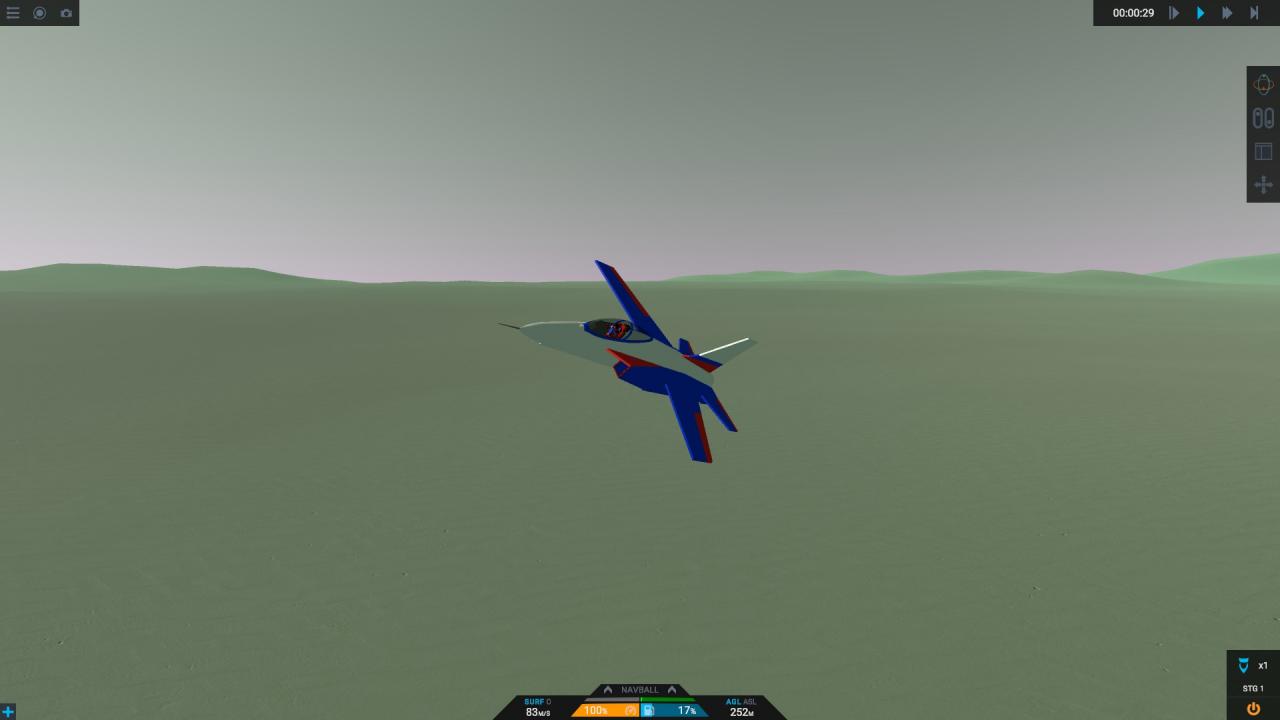 Stock craft Trainer flying on Sergeaa.
Stock craft Trainer flying on Sergeaa.
Droo

Droo is the third planet from Juno, and is the Earth analog for SimpleRockets 2. Droo has an atmosphere, like Sergeaa and Cylero, but it is not as thick as the former (and not as thin as the latter). Getting into orbit around Droo is probably the first thing any new player will want to shoot for.
Additionally, Droo has three moons: Brigo, Luna, and T.T.
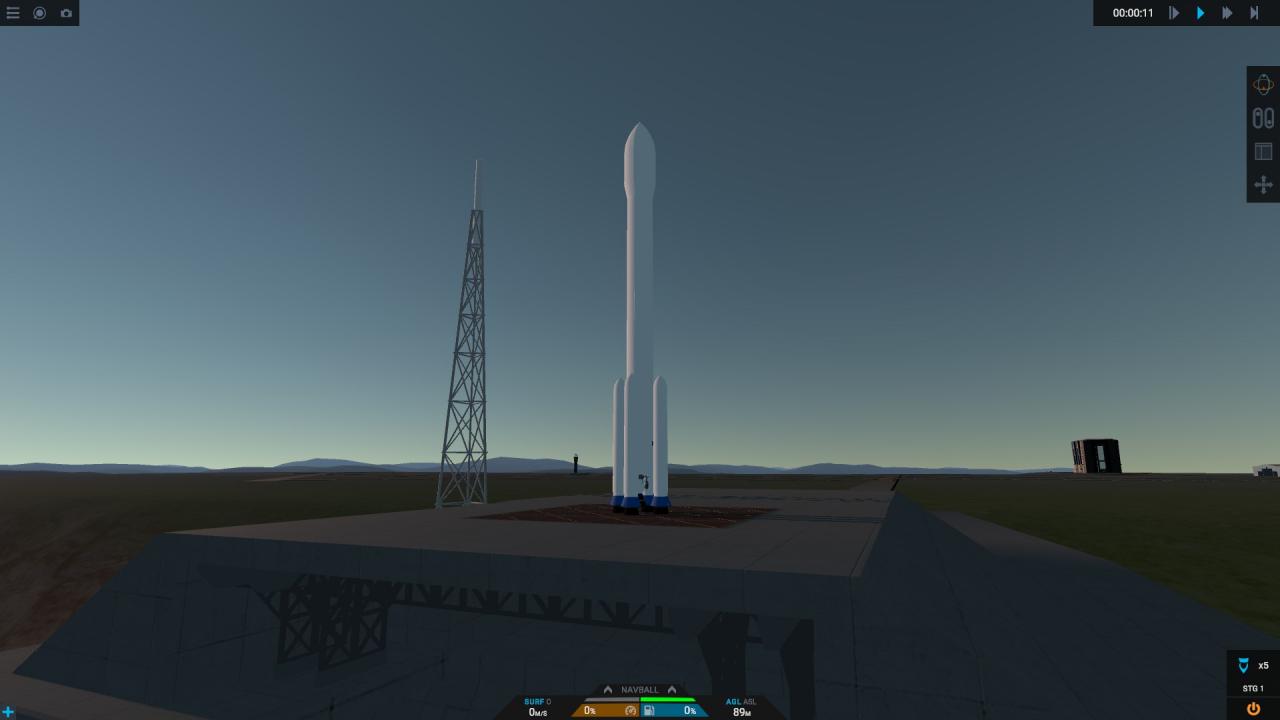
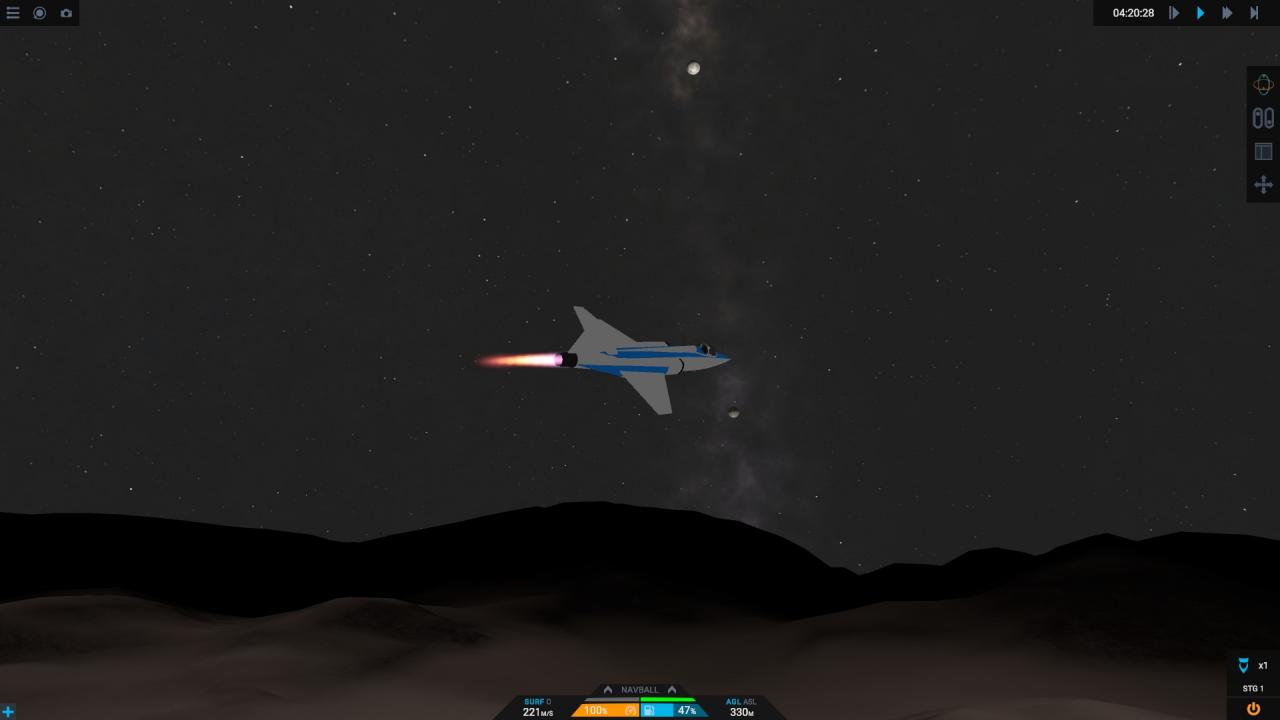 Top: A rocket on the launchpad at the DSC.
Top: A rocket on the launchpad at the DSC.
Bottom: A plane flying at night near the DDB with Brigo and Luna in the background.
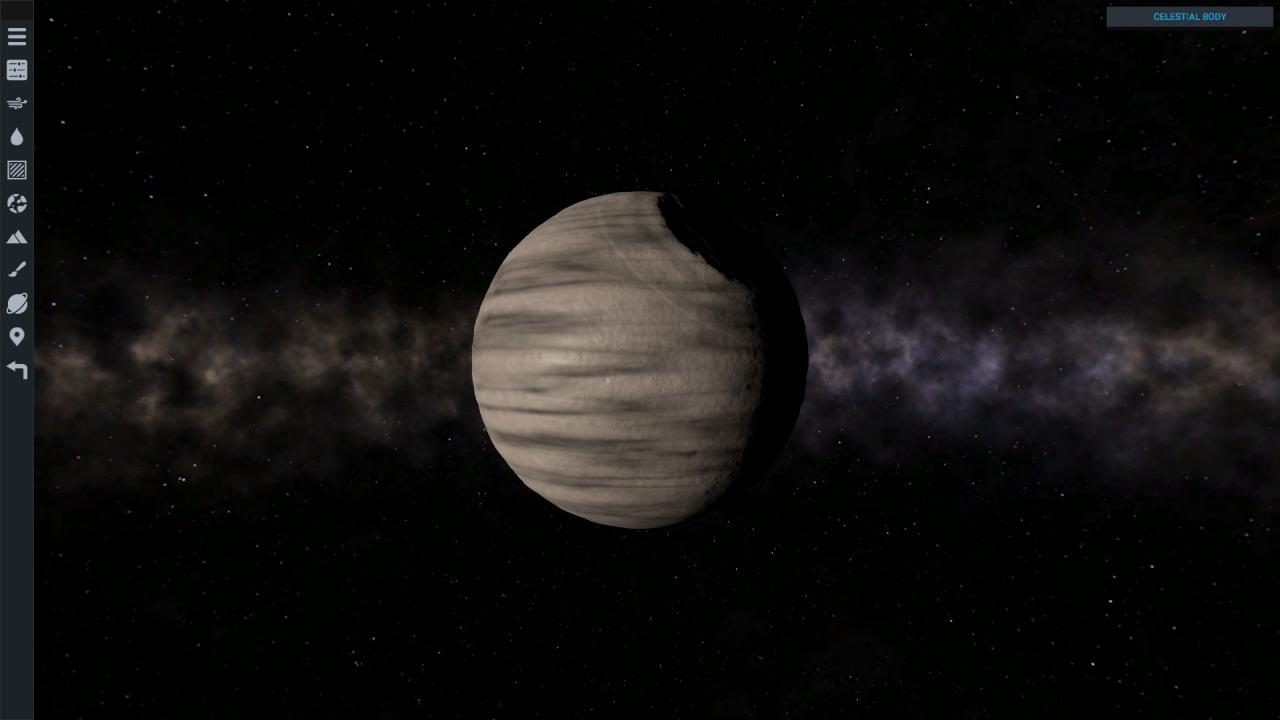 Brigo as seen in PlanetStudio.
Brigo as seen in PlanetStudio.
Brigo is the innermost of the Drooian moons, and has no realworld analog. Its appearance is mainly dominated by a massive impact crater in its northern hemisphere, which actually does make it look similar to Saturn’s moon Mimas.
 Luna as seen in PlanetStudio.
Luna as seen in PlanetStudio.
Luna is the largest of Droo’s three moons, and is the analog for Earth’s Moon. Once you’ve mastered getting into Droo orbit, try shooting for Luna. Landing is fairly easy if you land in the large mare basins. Luna also has a launchsite located near its southern pole.
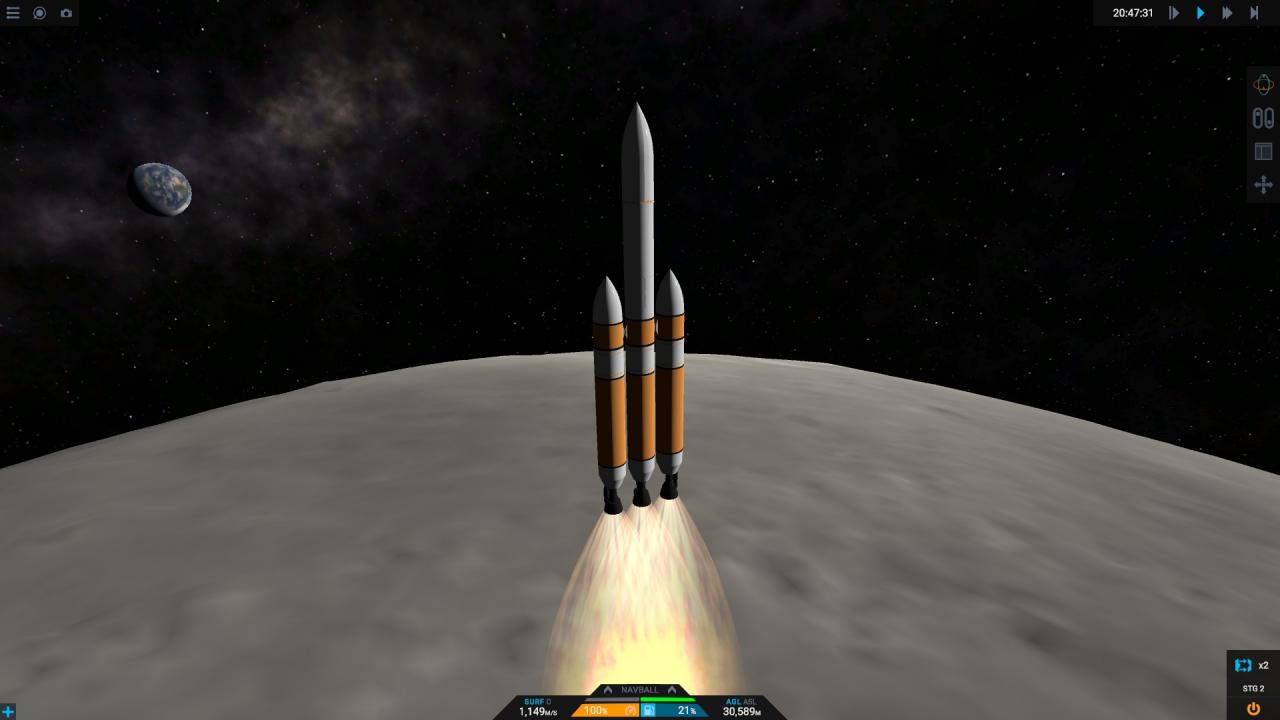 SimpleHeavy taking off from Luna with Droo in the background.
SimpleHeavy taking off from Luna with Droo in the background.
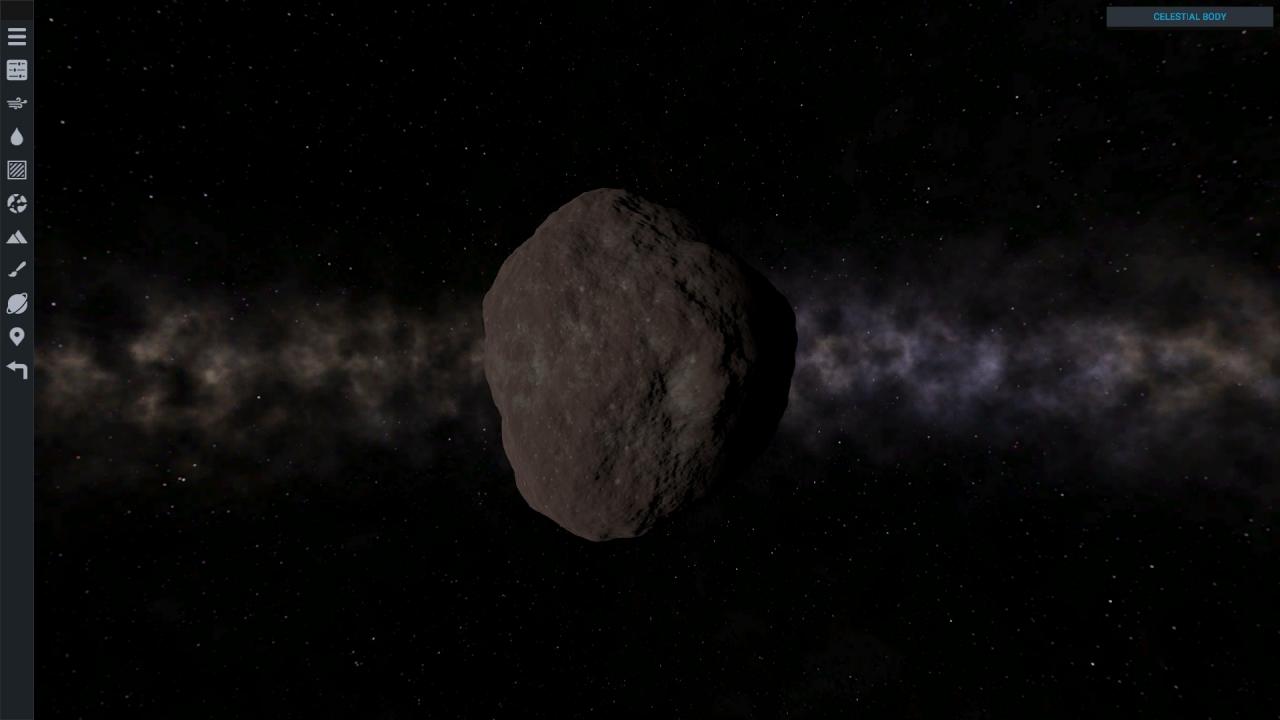 T.T. as seen in PlanetStudio.
T.T. as seen in PlanetStudio.
T.T. is the smallest and outermost of Droo’s moons. It is a fairly dark-colored asteroid with a lumpy shape. T.T. is unique as it is the only body ingame to orbit retrograde (backwards).
Cylero
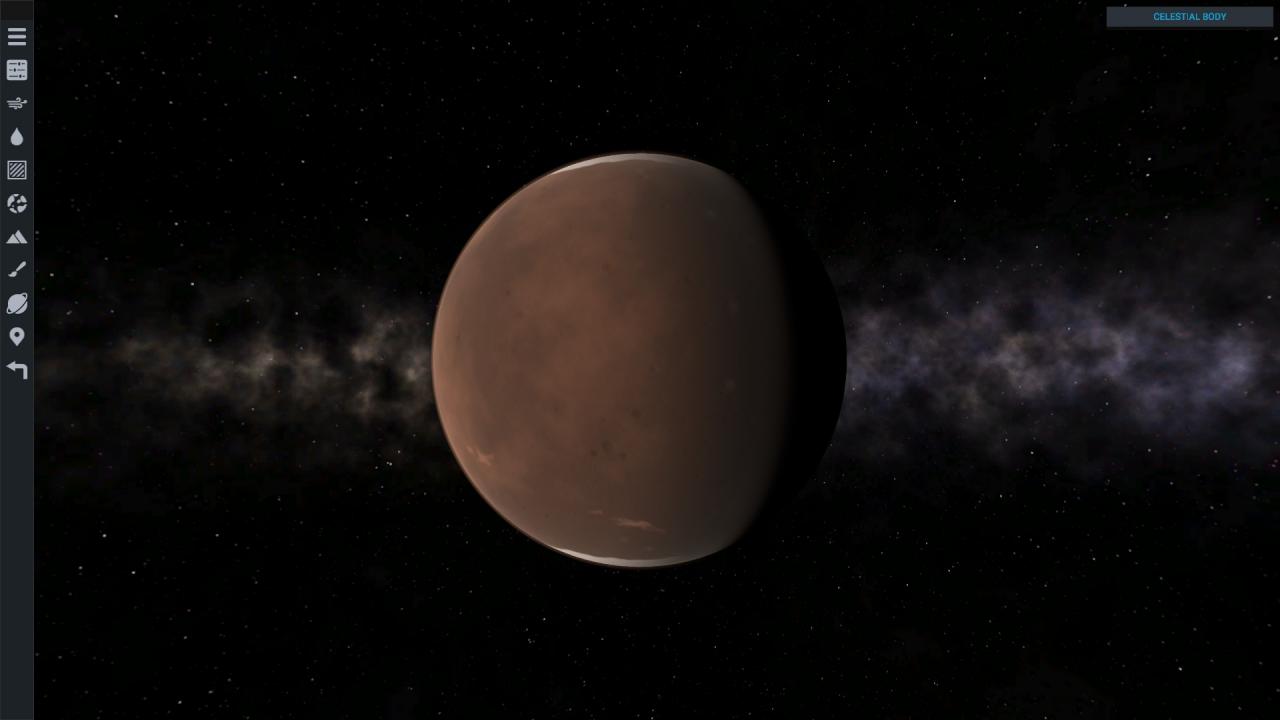 Cylero as seen in PlanetStudio.
Cylero as seen in PlanetStudio.
Cylero is the last of Juno’s terrestrial planets. It is the Mars analog for the game. Cylero has a thin atmosphere which although is not thick enough to support jet engine flight, it is just enough for parachutes to operate well. If you’re building a Cylero plane, make sure to make it light and large-winged.
Cylero’s surface is covered in highlands and lowlands with many impact craters (plus a large volcano which is likely based off of Olympus Mons). It has two moons (one of which will be left unnamed due to it apparently being a swear)
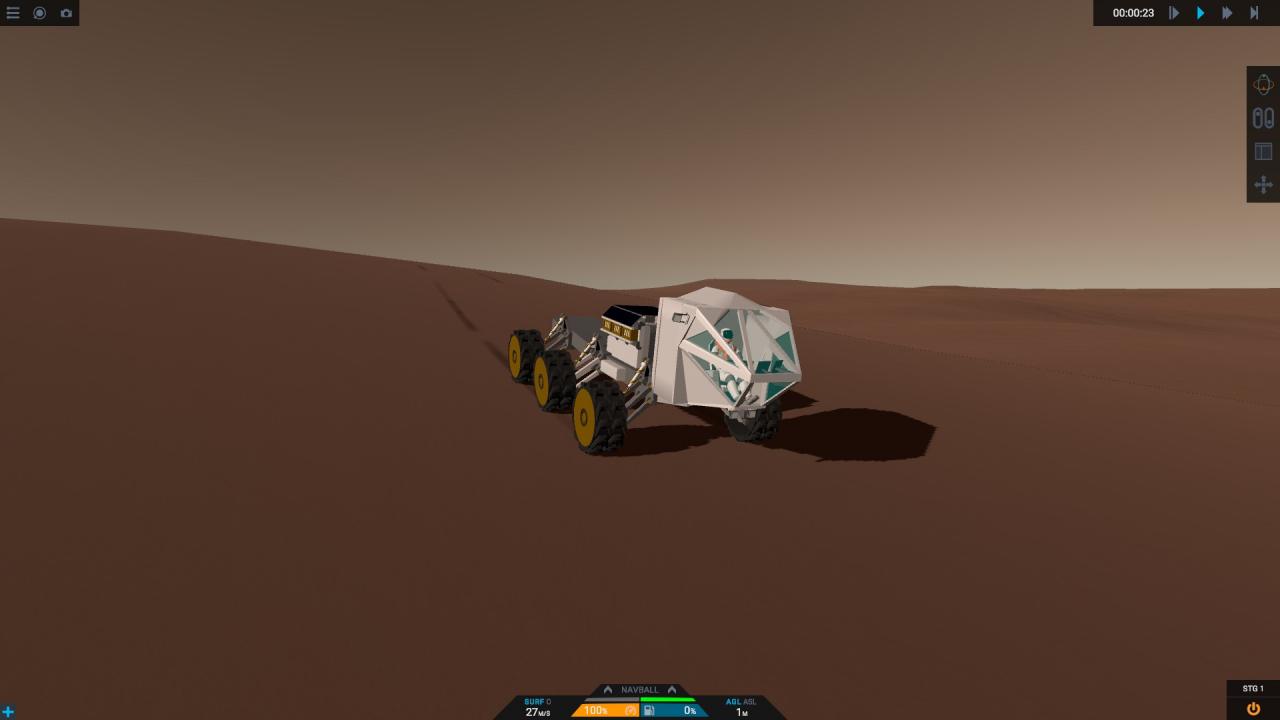 SimpleRover exploring the dunes of Cylero.
SimpleRover exploring the dunes of Cylero.
 Name is shown in the screenshot.
Name is shown in the screenshot.
This is another asteroid, and the smallest moon in the game.
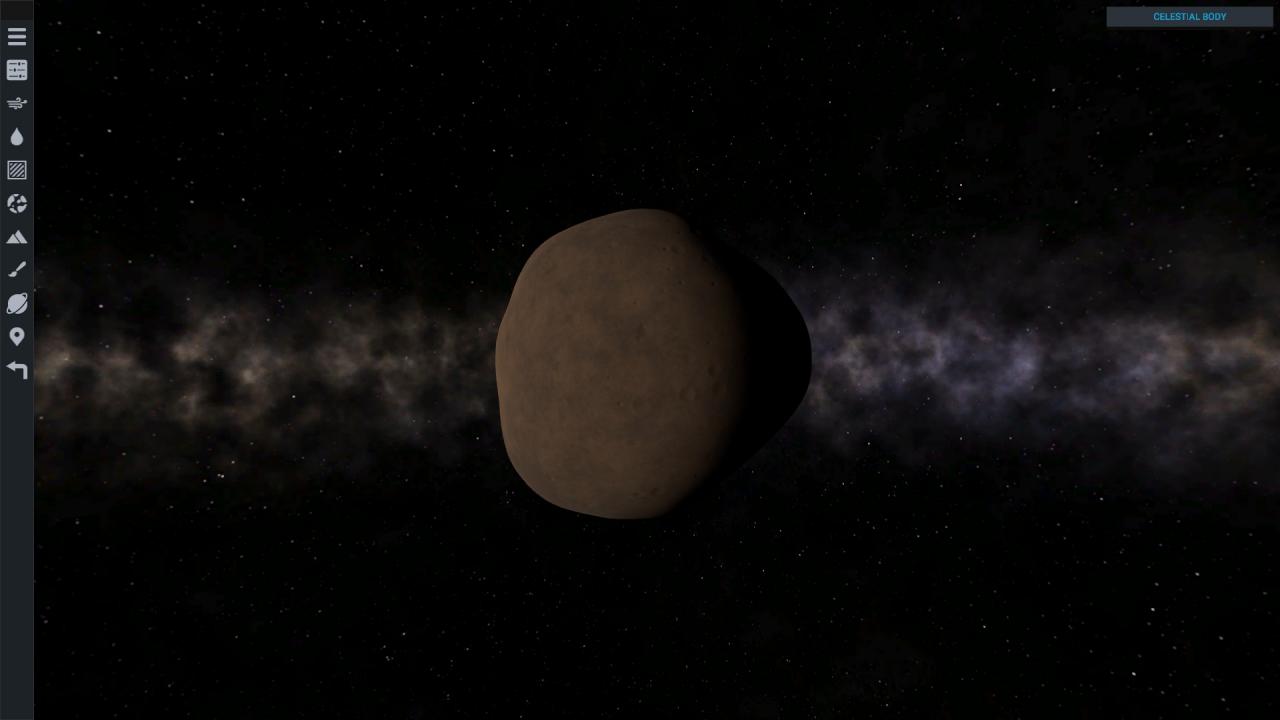 Herma as seen in PlanetStudio.
Herma as seen in PlanetStudio.
Herma is the larger of Cylero’s two moons and is the analog for Phobos. It is another asteroid.
Tydos
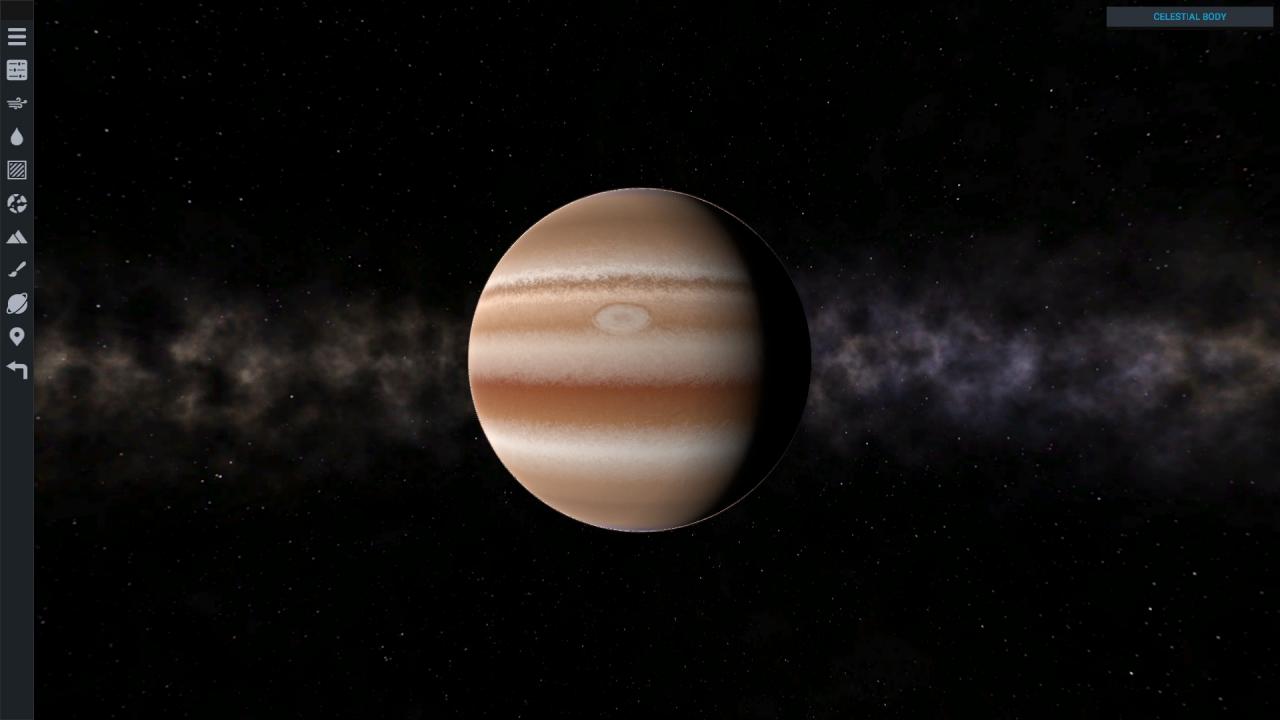 Tydos as seen in PlanetStudio.
Tydos as seen in PlanetStudio.
Tydos is the largest planet in the game, and is the Jupiter analog.
Landing on Tydos is impossible, due to it being a gas giant; at an altitude of 50 km your ship will be destroyed. Tydos’ massive gravity can be used to slingshot a craft onwards to Urados if you are skilled enough. It has a system of three large moons: Nebra, Miros and Orcus.
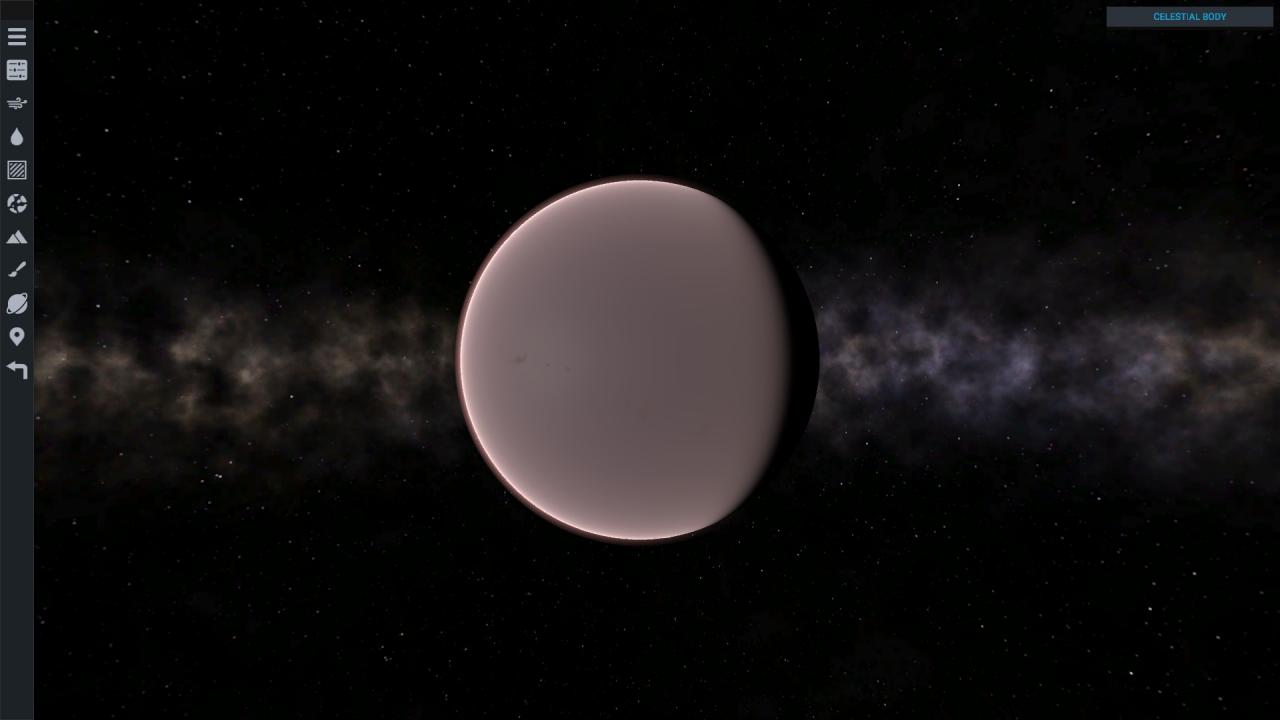 Nebra as seen in PlanetStudio.
Nebra as seen in PlanetStudio.
Nebra is the innermost and largest of Tydos’ moons, and second only to Taurus for the title of the largest moon in the game. It has a pinkish tinted atmosphere which is well suited for aerobraking. Its surface is covered in oceans of what can assumed to be water, with many small volcanic islands poking out of the seas. It has no real world analog.
 A small probe on the surface of Nebra.
A small probe on the surface of Nebra.
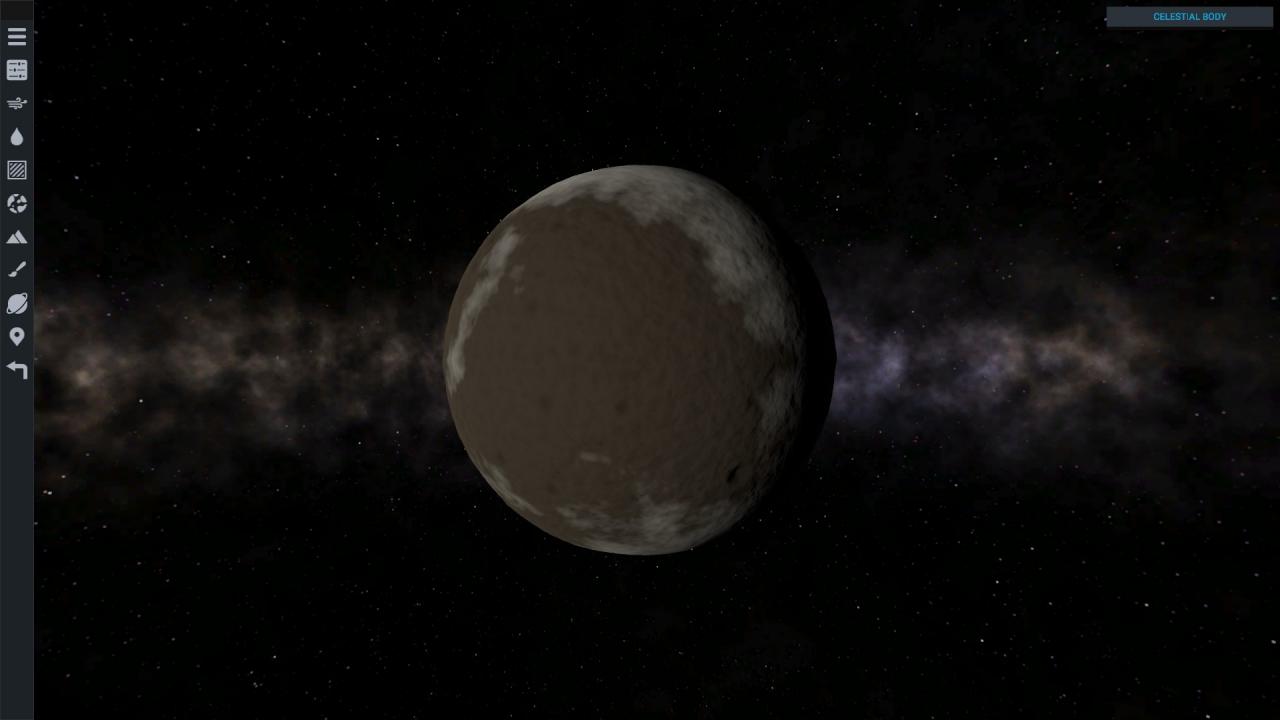 Miros as seen in PlanetStudio.
Miros as seen in PlanetStudio.
Miros is the smallest of the moons of Tydos, and is the analog for Saturn’s moon Iapetus. Its surface is covered in two different regions, one lighter area made of ice and another, darker side made out of rock.
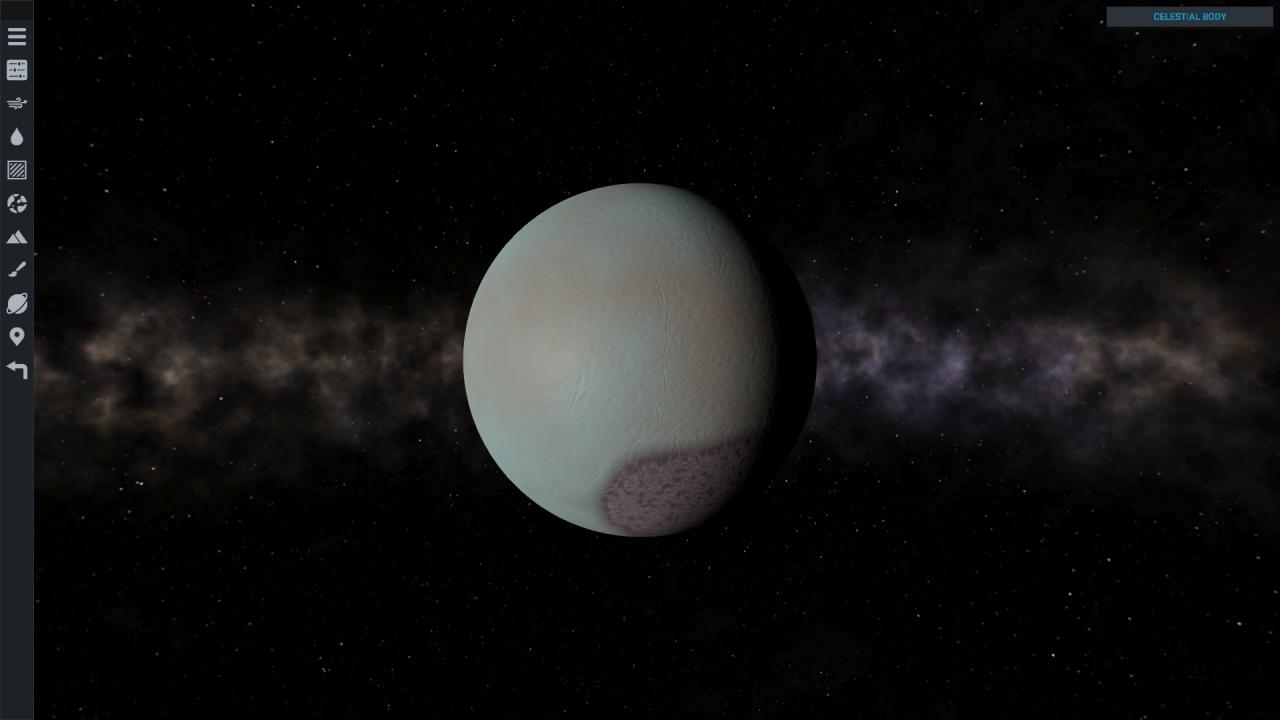 Orcus as seen in PlanetStudio.
Orcus as seen in PlanetStudio.
Orcus is the outermost and the strangest looking of the three moons. It has no realworld analog, although it might be inspired by Neptune’s moon Triton.
Urados
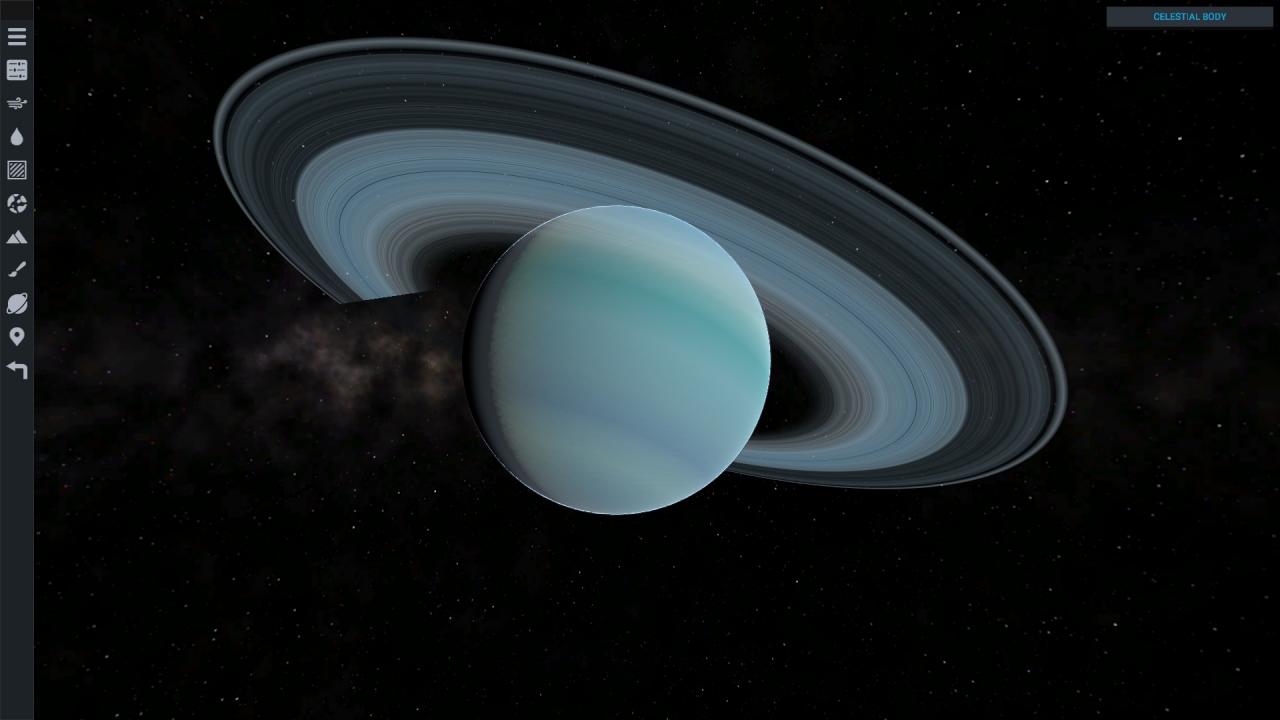 Urados and its rings as seen in PlanetStudio.
Urados and its rings as seen in PlanetStudio.
Urados is the most distant of the planets in the Juno System. It is the analog for Uranus (although it does actually have more in common with Saturn). It is also a gas giant, so landing is impossible; like Tydos, at an altitude of 50 km your ship will be destroyed. It is an attractive target for missions not only due to its distance from Droo but also because of its beautiful rings and system of four moons: Jastrus, Boreas, Taurus and Hypatchion.
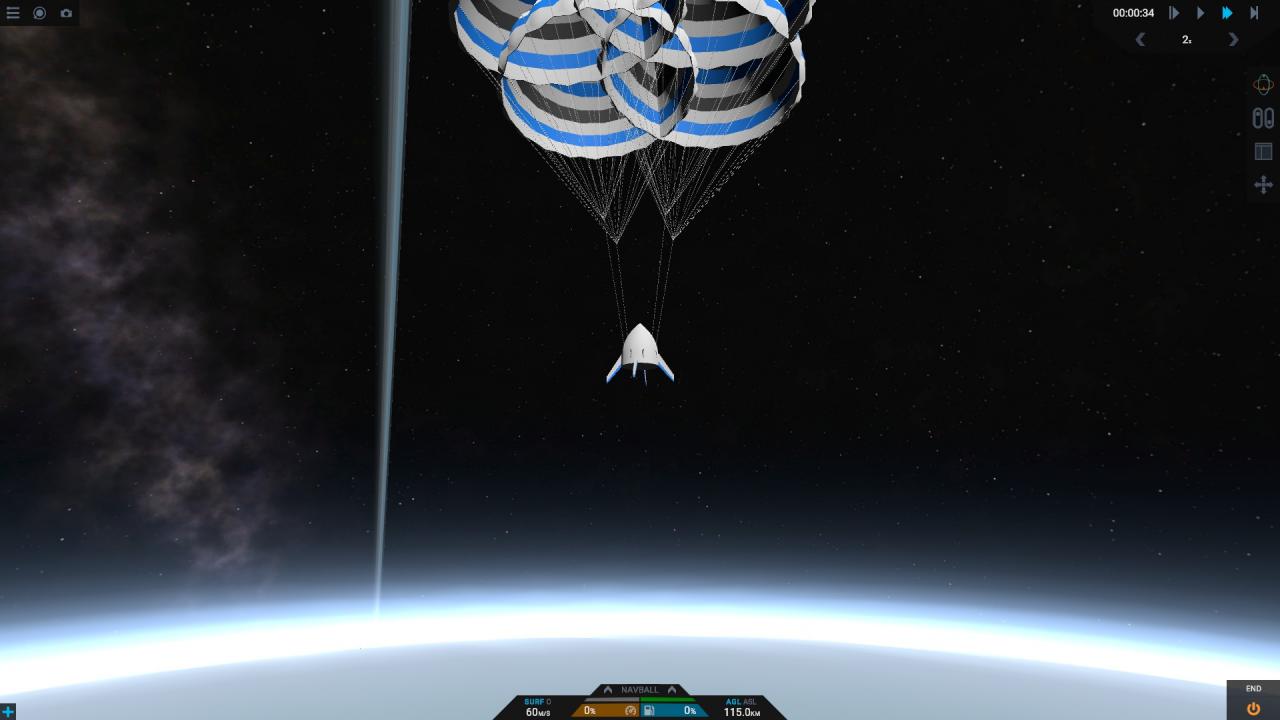 A probe using parachutes to descend through Urados’ atmosphere.
A probe using parachutes to descend through Urados’ atmosphere.
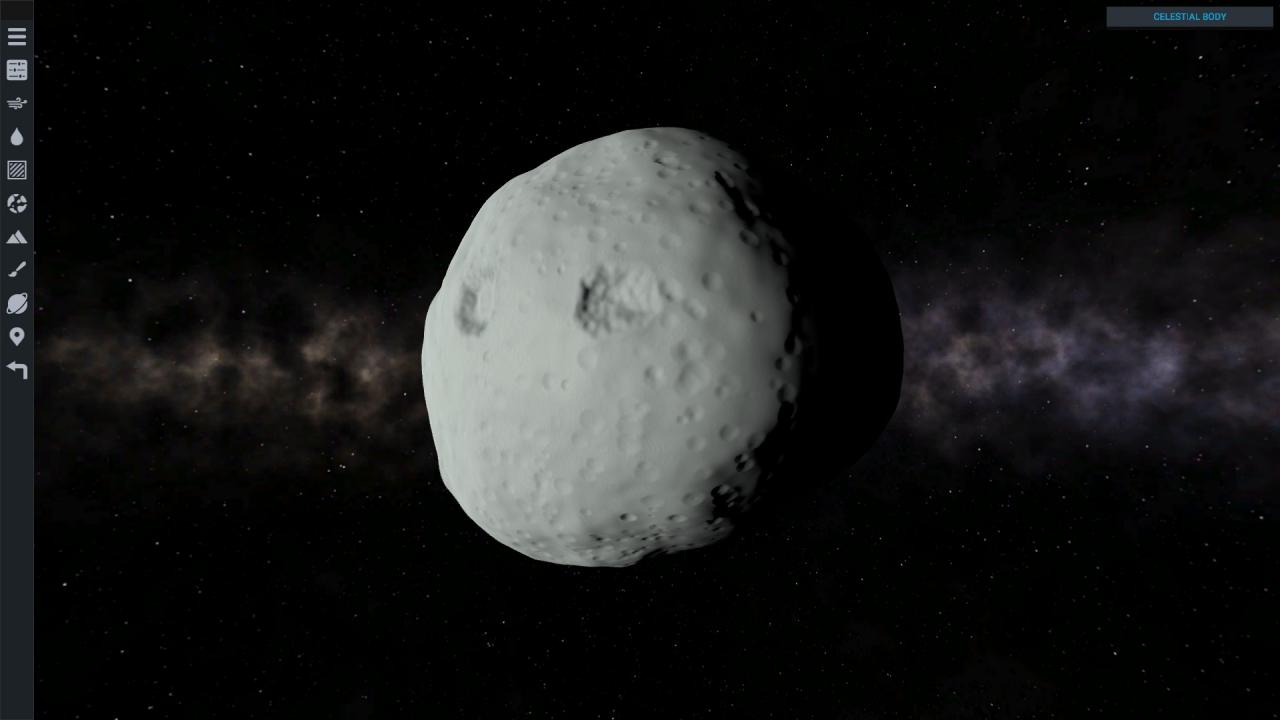 Jastrus as seen in PlanetStudio.
Jastrus as seen in PlanetStudio.
Jastrus is a tiny shepherd moon orbiting within Urados’ rings. It is notable for the two large craters which look like eyes if viewed at a certain angle, and also the fact that it has the weakest gravity of any body ingame.
 Boreas as seen in PlanetStudio.
Boreas as seen in PlanetStudio.
Boreas is an icy moon that is likely based off Saturn’s moon Enceladus. Its surface is very smooth, with few impact craters that would dot the surface of other moons.
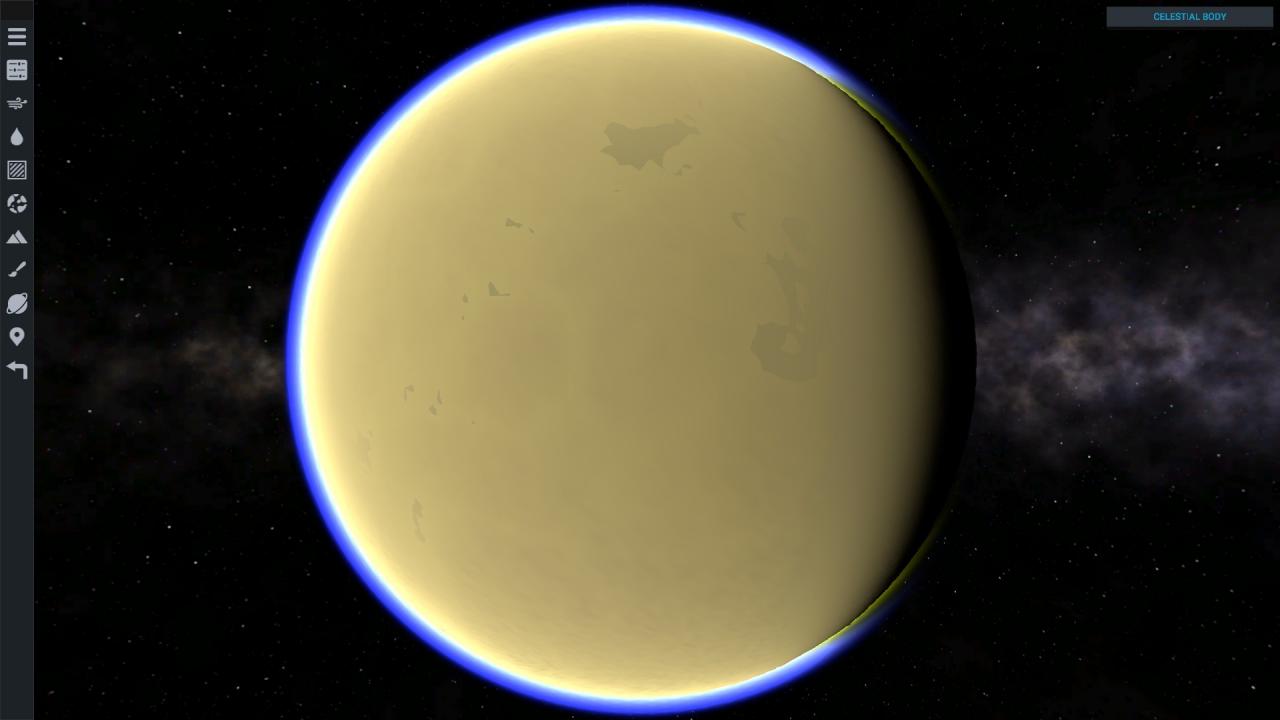
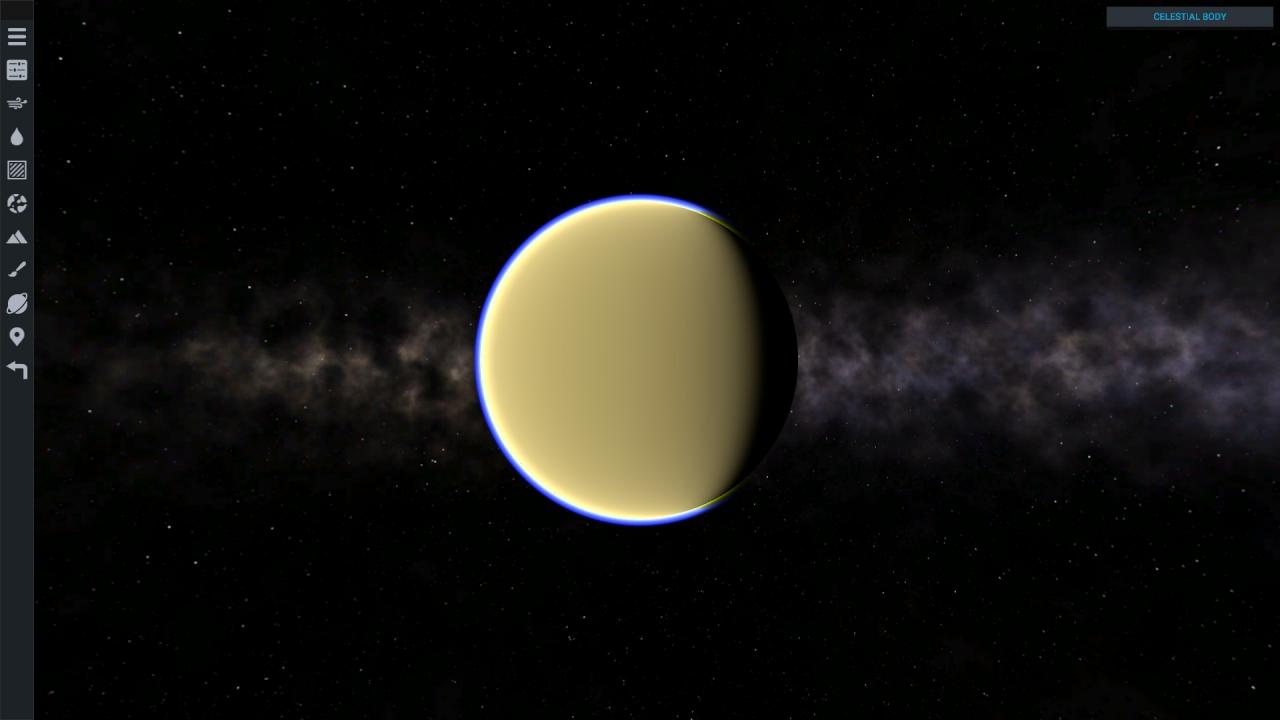 Top: Taurus as seen closeup in PlanetStudio.
Top: Taurus as seen closeup in PlanetStudio.
Bottom: Taurus as seen from afar in PlanetStudio.
Taurus is the largest moon in the stock game, being nearly one-third the size of Droo. It is based off of Saturn’s moon Titan. Taurus has a very thick atmosphere which, combined with its weak gravity, make it a near-haven for airplanes. It also has methane lakes covering good portions of its surface.
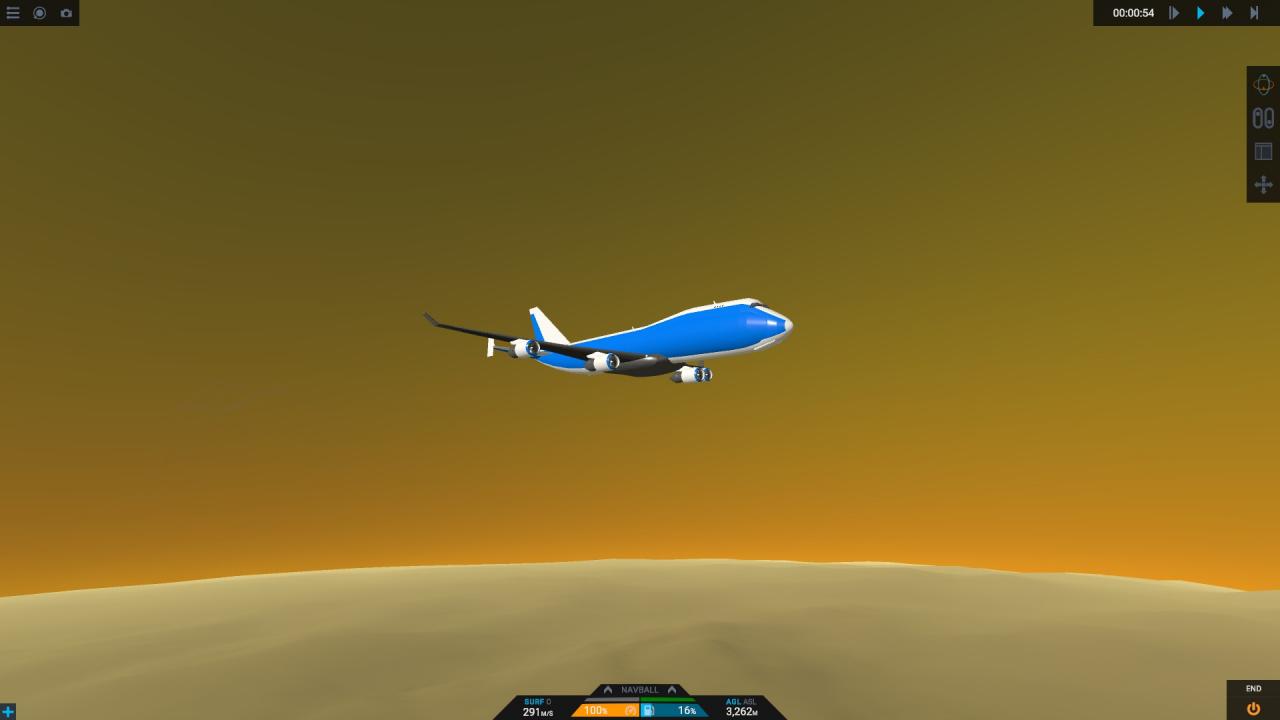 Stock craft SimpleAirways flying in Taurus’ upper atmosphere.
Stock craft SimpleAirways flying in Taurus’ upper atmosphere.
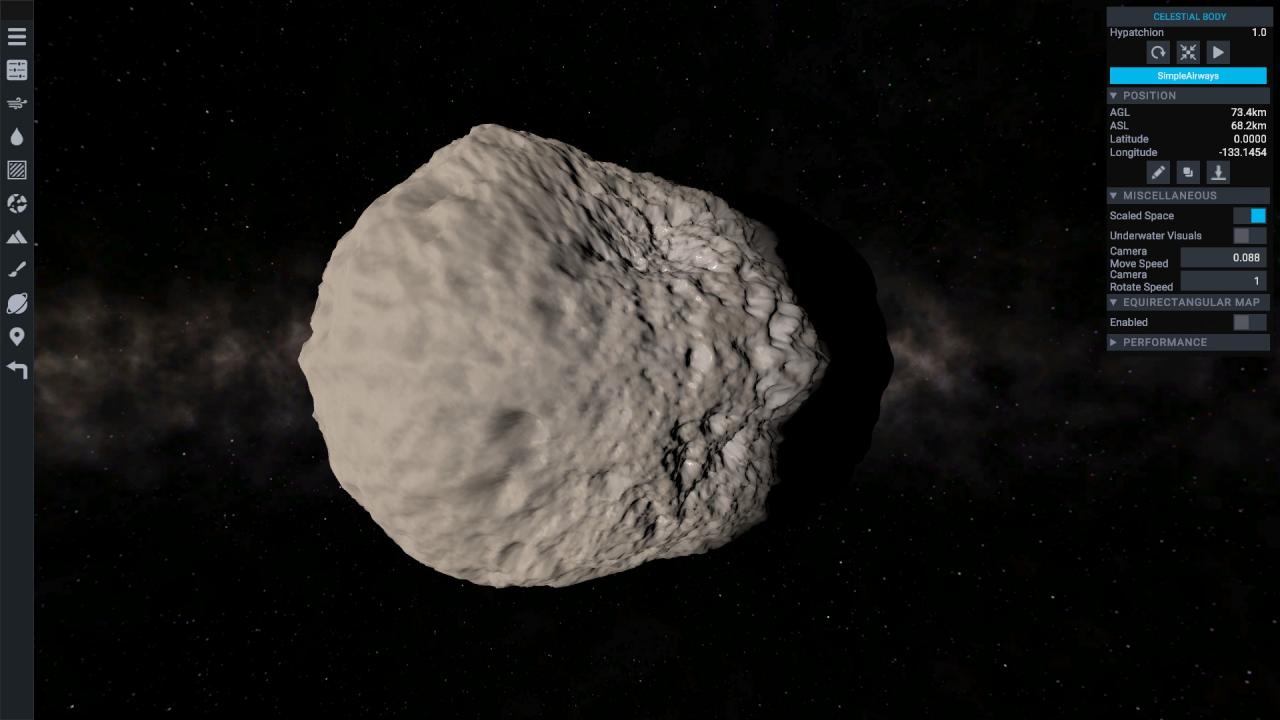 Hypatchion as seen in PlanetStudio.
Hypatchion as seen in PlanetStudio.
Hypatchion is the outermost of Urados’ moons, and the analog of Hyperion (seriously, can’t you tell by the name?) Because of its very rough surface it would be quite challenging to land on.
Handrew’s Comet
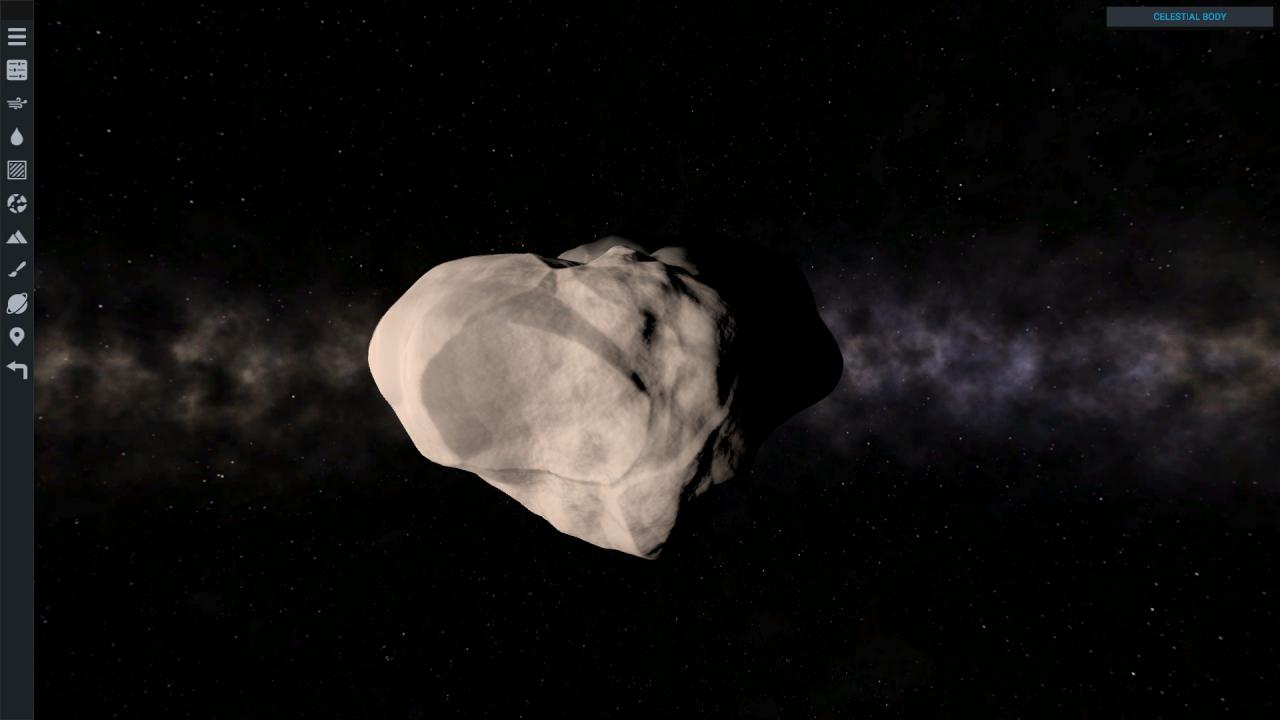 Handrew’s Comet as seen in PlanetStudio.
Handrew’s Comet as seen in PlanetStudio.
Handrew’s Comet is the sole comet of the stock game, and is based off of Halley’s Comet. Because of its elliptical orbit and rough surface, it is quite challenging to get to, as both Cylero and especially Tydos can get in the way and throw you offcourse.
